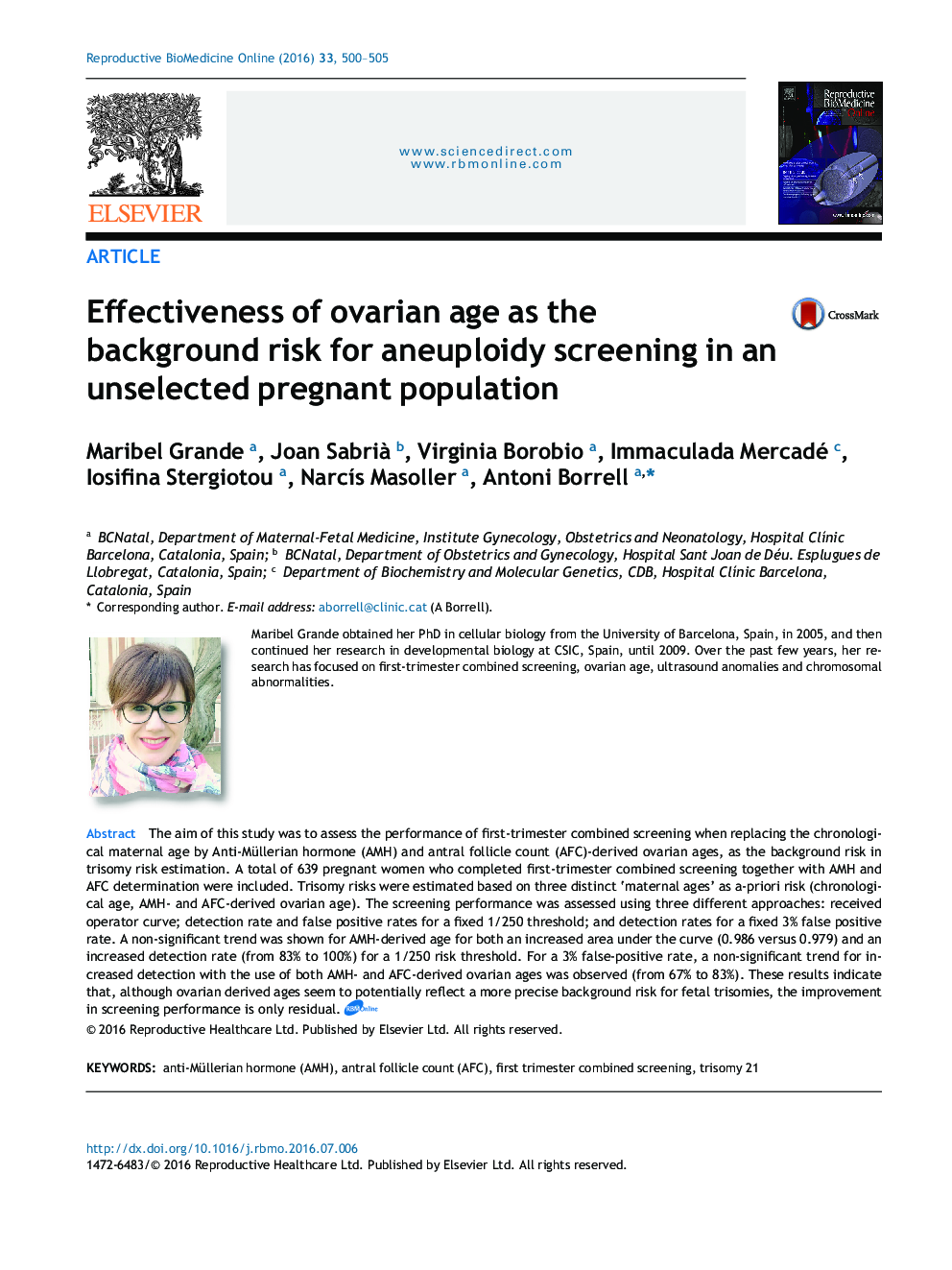| Article ID | Journal | Published Year | Pages | File Type |
|---|---|---|---|---|
| 5696748 | Reproductive BioMedicine Online | 2016 | 6 Pages |
Abstract
The aim of this study was to assess the performance of first-trimester combined screening when replacing the chronological maternal age by Anti-Müllerian hormone (AMH) and antral follicle count (AFC)-derived ovarian ages, as the background risk in trisomy risk estimation. A total of 639 pregnant women who completed first-trimester combined screening together with AMH and AFC determination were included. Trisomy risks were estimated based on three distinct 'maternal ages' as a-priori risk (chronological age, AMH- and AFC-derived ovarian age). The screening performance was assessed using three different approaches: received operator curve; detection rate and false positive rates for a fixed 1/250 threshold; and detection rates for a fixed 3% false positive rate. A non-significant trend was shown for AMH-derived age for both an increased area under the curve (0.986 versus 0.979) and an increased detection rate (from 83% to 100%) for a 1/250 risk threshold. For a 3% false-positive rate, a non-significant trend for increased detection with the use of both AMH- and AFC-derived ovarian ages was observed (from 67% to 83%). These results indicate that, although ovarian derived ages seem to potentially reflect a more precise background risk for fetal trisomies, the improvement in screening performance is only residual.
Related Topics
Health Sciences
Medicine and Dentistry
Obstetrics, Gynecology and Women's Health
Authors
Maribel Grande, Joan Sabrià , Virginia Borobio, Immaculada Mercadé, Iosifina Stergiotou, NarcÃs Masoller, Antoni Borrell,
